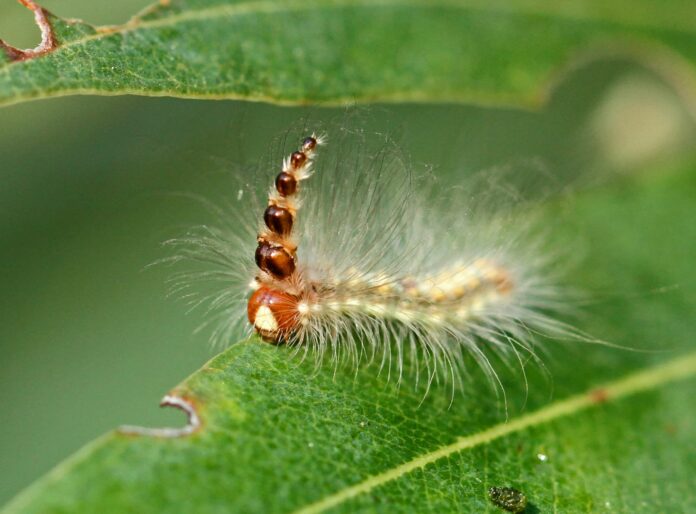Mad hatterpillar is one fascinating insect with a hat literally from heads that they use as a defense mechanism. This caterpillar got its name after the Mad Hatter from Alice’s Adventures in Wonderland, and it is absolutely unique. Both the name and appearance probably say something, but I am here to tell you more about this fascinating creature. Let’s find out more about them together with me below, so take a look.
1Appearance

Mad hatterpillar has a brown to yellow body with some black markings that help them to blend with eucalyptus tree trunks. Caterpillars must regularly shed their exoskeleton in order to grow, and mad hatterpillars do the same. The unique thing about these weird-looking caterpillars is that they don’t discard their empty head casings. After the fourth molt, a mad hatterpillar starts stacking its head on top of its noggin. This species molts up to 13 times, and each empty head gets bigger after each molt. Those hats are not just for show, the caterpillars actually use this bizarre headgear to swat predators away. They do so by shaking their heads around vigorously so that the attackers won’t get the chance to eat them.
At the same time, these hats also save their lives when larger predators like birds or lizards want to eat them. Their natural predators are birds, jumping spiders, lacewings, parasitic flies and wasps, reptiles, and stinkbugs. Most of the time, those predators will only get a mouthful of the hats while the caterpillars remain alive. The hats also make the mad hatterpillar appears bigger which is more threatening to predators like jumping spiders. On a side note, you can see that these caterpillars are covered with highly itchy and irritating spines on their bodies. Touching them would be a mistake because the hairs can sting both other animals and humans. In case you see one, it is a better idea to not pick them up to inspect them.
2Behavior
These caterpillars are quite sociable when they hatch since they form tight clusters to feed in. By being in a larger group, they are safer from potential predators that want to feed on them. When they are mature, they will go out on their own to live their lives on eucalyptus trees. The tower of heads and the stinging hairs are not the only defense mechanisms that a mad hatterpillar has. In case a predator grabs it, this caterpillar will vomit its guts out in order to evade predators. To break free from the predator, it spews out a whole bit of green liquid that probably smells and tastes horrible. Then it will shove the yucky liquid into the face of the predators while writhing around to escape. Mad hatterpillars are friendly to neither humans nor other animals, and people don’t really like these pests either.
3Feeding & Habitat
Mad hatterpillars also go by the name of gum-leaf skeletonizers because they feed on eucalyptus leaves (gum trees). The cool thing about these caterpillars is that they can munch the leaves down to the veins; hence the nickname. Their appetite for eucalyptus leaves is so big they have been known to chew through natural forests spanning 150,000 hectares. What they leave behind after mealtime are the scavenged skeleton of stems and vines that they cannot bite and chew. As they grow larger and stronger, these eating machines will chew through everything. In the periodic outbreak of this species, mad hatterpillars can decimate whole trees.
If you see an animal that looks weird, chances are they come from Australia. Mad hatterpillars are native to Australia but they also live in New Zealand where they are serious pests in those two countries. Mad hatterpillars were first found in New Zealand in 1992 when the country began growing eucalyptus plantations. Because they are not New Zealand’s natural ecology, they lack predators which causes the population to dramatically boom. Looking small and all, mad caterpillars cause crop damage worth around $30 million annually in New Zealand.
Related Post: Things You Don’t Know About Twig Spiders




